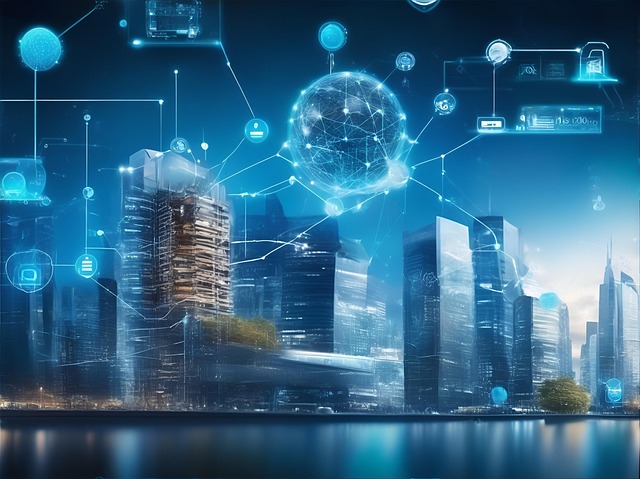In today's fast-casual restaurant scene, Artificial Intelligence (AI) is transforming operations and customer experiences through personalized AI-driven menu boards at drive-thrus. AI analyzes customer preferences for tailored choices, speeds up order processing, and automates kitchen tasks for consistent food quality. This technology enables restaurants to handle peak demands efficiently, boost profitability, and offer exceptional dining experiences with real-time personalization, reduced wait times, and dynamic pricing adjustments.
In the rapidly evolving landscape of food service, Artificial Intelligence (AI) and robotics are revolutionizing fast casual dining. This article explores how these cutting-edge technologies are unlocking new levels of efficiency in kitchen operations. From streamlining preparation to enhancing customer experiences with personalized menu boards, AI is driving a new era of innovation. We delve into the transformative power of AI, focusing on drive-thru experiences, and its potential to redefine how we interact with food service.
- Unlocking Efficiency: AI in Fast Casual Restaurants
- The Role of Robotics in Personalized Food Preparation
- Enhancing Customer Experience with AI-Driven Menu Boards
Unlocking Efficiency: AI in Fast Casual Restaurants

In today’s fast-paced food industry, Artificial Intelligence (AI) is revolutionizing the way fast casual restaurants operate, particularly in kitchen preparation and customer experience. One of the most significant advantages is its ability to enhance efficiency through AI drive-thru menu board personalization. By analyzing customer preferences and trends, AI algorithms can dynamically tailor menu options, ensuring that each customer receives a unique and customized experience. This level of personalization not only satisfies individual tastes but also streamlines order processing, reducing wait times.
Additionally, AI assists in food preparation by automating various tasks, from ingredient recognition to robotic cooking. These systems can accurately measure and mix ingredients, cook food to specific temperatures, and even assemble dishes with precision. This technological advancement results in consistent food quality, reduces human error, and allows kitchen staff to focus on more complex culinary tasks. As a result, restaurants can serve customers faster, meet peak demands efficiently, and ultimately boost profitability.
The Role of Robotics in Personalized Food Preparation

The integration of robotics in food preparation is transforming the way we experience dining, particularly in fast-casual settings. With AI at the helm, robotic systems are now capable of personalizing meals on a scale never seen before. By leveraging advanced algorithms and machine learning, these robots can interpret individual preferences from menu choices, dietary restrictions, and even past orders to tailor each dish precisely. This level of customization ensures that every customer receives a unique, made-to-order meal.
Imagine a drive-thru experience where the AI-driven menu board not only presents options but also suggests items based on your favorite flavors and previous purchases. The robot then prepares your food with meticulous precision, ensuring consistency in taste and quality. This technology promises to enhance customer satisfaction, reduce wait times, and offer a level of culinary customization previously available only in high-end restaurants.
Enhancing Customer Experience with AI-Driven Menu Boards

In today’s fast-paced food industry, enhancing the customer experience is paramount for success. One innovative way to achieve this is through AI-driven menu boards at drive-thrus. By leveraging artificial intelligence, restaurants can offer personalized menus that adapt in real-time based on customer preferences and ordering patterns. This not only improves efficiency but also allows for unique and tailored experiences, increasing customer satisfaction.
AI-driven menu boards can dynamically adjust pricing, highlight specials, and even suggest items based on past purchases or current trends. This level of personalization fosters a sense of exclusivity among patrons, making their dining experience more memorable. Moreover, these smart displays can provide real-time operational insights to restaurants, helping them optimize inventory management and streamline kitchen processes.
The integration of AI and robotics in fast casual dining is transforming the culinary landscape. By enhancing efficiency, personalization, and customer experiences through innovations like AI-driven menu boards, these technologies are not just streamlining operations but also creating unique, tailored dining experiences. As these advancements continue to evolve, we can expect even more groundbreaking changes in the future of foodservice, with AI playing a pivotal role in shaping the way we eat and interact with food.
